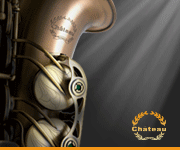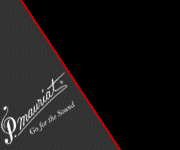 Forgot Username? Forgot Password?
Forgot Username? Forgot Password?
 SELMER Mark VII (1975-1981)
SELMER Mark VII (1975-1981)
The Mark VII was heralded by Selmer as a successor to the Mark VI when it was introduced in 1975. In the Selmer brochures and catalogs of this time, they extol faster execution, a more refined tone, better intonation, and a warmer character. Unfortunately for Selmer, it was no longer called the Mark VI. After the huge popularity of the Mark VI, any sax that came after was set up for failure.
The Mark VII isn't a bad horn, in fact like all Selmers, most are good and some are great. They do feature larger table keys which can be cumbersome for players with smaller hands, but otherwise they are comfortable instruments, with a slightly tighter more focused sound than the Mark VI. The sax was designed by Michel Nouaux and Frederick Hemke, under the direction of Jean Selmer. The first Mark VII produced was an alto, # 230839, and the first tenor was # 231087. It was in production for approximately 5-6 years, being replaced by the Super Action 80 (announced in 1980, in full production by 1981). The Mark VII was the first Selmer that came with high F# as standard, before now it was only available as a special order.
Officially, Selmer only made the Mark VII model in alto and tenor saxophones, but looking over the official Selmer records, there were a handful of Mark VII bari and soprano saxes. From numbers 297991 - 297995, four bari saxes were produced that are officially listed as "M7". This happened again late in the run, with 72 made between numbers 311888 – 311988, and again from numbers 315086 – 315144, 25 more were produced. There were exactly 3 Mark VII soprano saxophones made, in between numbers 315347 – 315350.
Now, obviously these numbers are very late in the run of the Mark VII, in fact they fall into the run of the Super Action 80 at the end. Whether these were actual fully redesigned Mark VII models, or simply a Mark VI with Mark VII stamping, is anyone's guess. I have not see any of them in person (if anyone has one out there, please contact us!). As far as the sopranos go, the Selmer records do not show those 3 instruments as having sold or shipped, so they could be prototypes for the upcoming Super Action 80. Selmer was still producing Mark VI sopranos and bari's after these numbers (I've seen a Mark VI soprano # 324164), so much of this is conjecture until I see one in person. But the logs show these horns do exist (or did at one time).
The other noteworthy change in the Mark VII is the conclusion of American-engraved models. Continuing the tradition from the Mark VI, the early years of the new model still have USA-bound instruments shipping to Elkhart, Indiana, for final engraving and lacquering. This stopped sometime around # 269xxx. After that, horns were shipped to the USA as finished products, so you will no longer see American-style engraving on them, only Euro-style engraving or none at all.
[less]The Mark VII was heralded by Selmer as a successor to the Mark VI when it was introduced in 1975. In the Selmer brochures and catalogs of this time, they extol faster execution, a more refined tone, better intonation, and a warmer character. Unfortunately for Selmer, it was no longer called the M... [more]
Serial Numbers:
| Beginning Year | Beginning Number |
|---|---|
| 1975 | 233901 |
| 1976 | 246801 |
| 1977 | 261101 |
| 1978 | 276101 |
| 1979 | 289701 |









